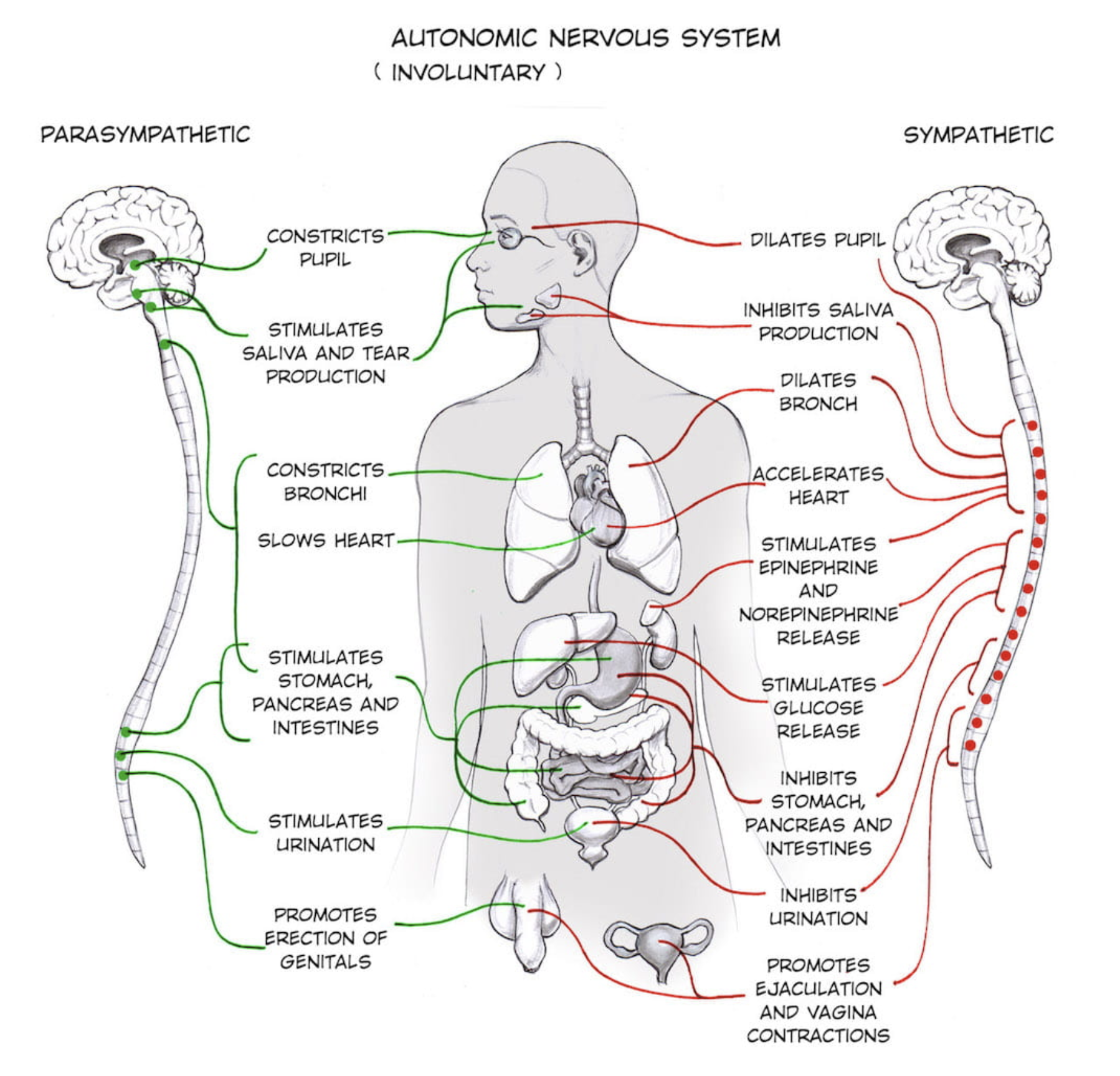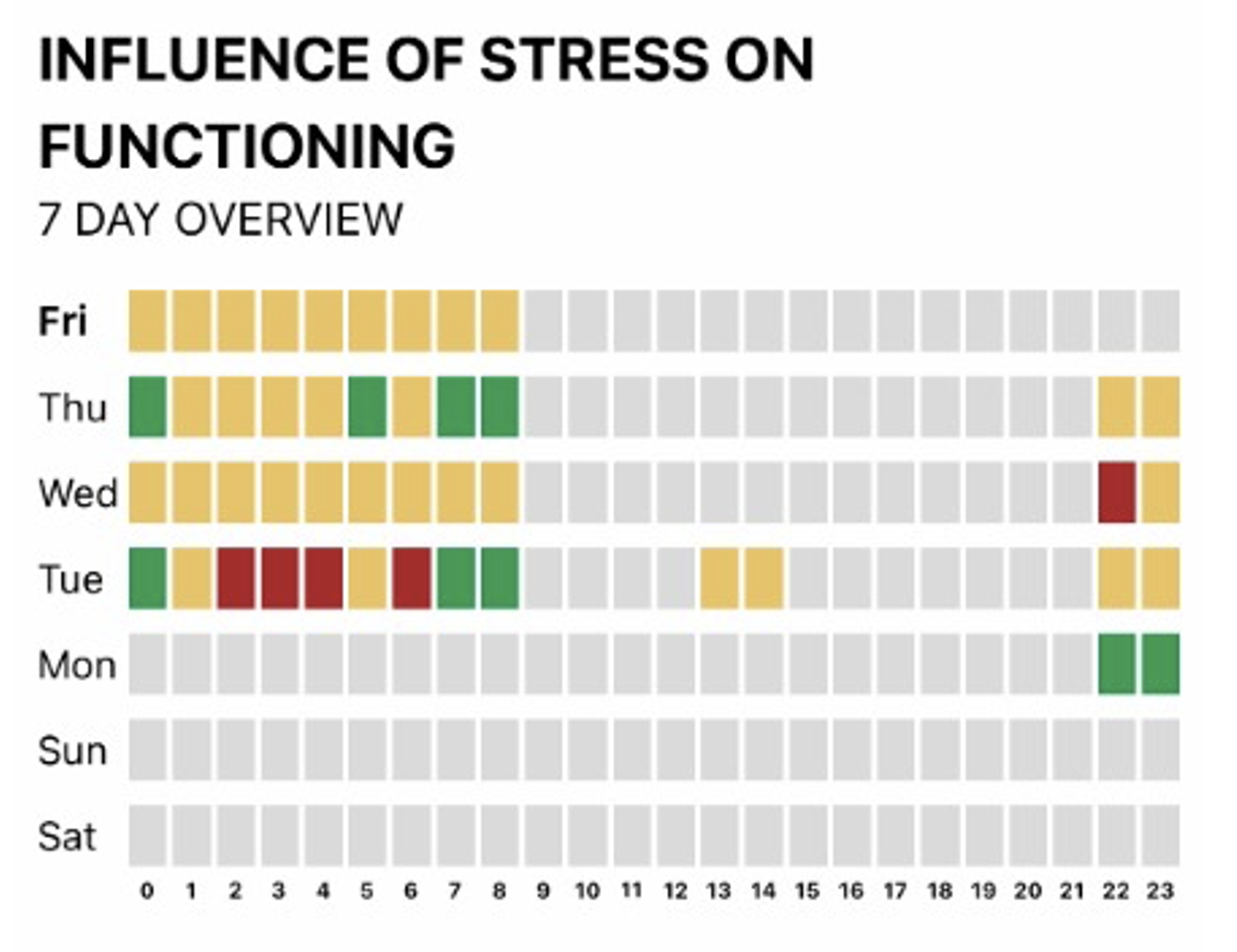Emography
Autonomic Nervous Sytem
The sympathetic nervous system and the parasympathetic nervous system are both components of the autonomic nervous system, which controls involuntary bodily functions. While the parasympathetic nervous system is responsible for promoting rest, relaxation, and digestion, the sympathetic nervous system activates the “fight or flight” response in the body.
When the sympathetic nervous system is activated, it prepares the body for action in response to a perceived threat or stressor. It increases heart rate, constricts blood vessels, dilates the airways to enhance oxygen intake, triggers the release of stress hormones like adrenaline, and diverts blood flow away from non-essential organs towards the muscles, heart, and brain. These responses help the body to mobilize its resources and respond effectively to a potentially dangerous situation.
Unlike voluntary actions that can be consciously controlled, such as moving your limbs, the activation of the sympathetic nervous system is largely involuntary. It is controlled by a complex network of neurons and reflexes in the spinal cord and brainstem, allowing for rapid and automatic responses to stressors. This automatic response ensures that the body can react swiftly in threatening situations without requiring conscious effort or decision-making.
However, while you may not be able to consciously control the activation of the sympathetic nervous system, certain techniques like deep breathing, relaxation exercises, and mindfulness practices can help modulate its effects. By engaging in these practices, you can promote a sense of calm and relaxation, counteracting the heightened arousal associated with sympathetic activation.
EmoGraphy
EmoGraphy provides insight in how we respond to stress. Humans respond to stress in two ways; an immediate response to the stressor (adrenaline release) and a slower response (cortisol release) to recover from that stressor. Stress has a direct impact on our cognitive performance. High cortisol levels may negatively affect cognitive performance such as contemplation, strategic thinking and memory function. Low levels are thought to increase fatigue by making tasks appear tougher, and limiting endurance of sustained physical and mental activities.
EmoGraphy provides detailed insights in this mechanism by displaying stress levels in real-time and calculating the related cognitive functioning of the brain – the CognitiveZone – that is impacted by cortisol. Through these measurements and calculations, EmoGraphy can also predict changes in cognitive abilities up to an hour ahead (assuming the user performs similar activities).
EmoGraphy is based on skin conductance (EDA); an accurate measurement of sympathetic nervous system activity that reflects the body’s so-called fight or flight response. The Cognitive Zones help the user to understand how to optimize his/her cognitive performances and avoid under- and over-stimulation.
Stress Level
Stress Level reflects the immediate response to a stressor. It indicates the amount of physical (strong exercise, spicy food, or the temperature) and emotional stress of the user at present time.
Cognitive Zone
Cognitive Zone is based on the slower response (cortisol release) to a stressor. By remaining in a zone of optimal emotional stimulation, you can avoid both drowsiness and too much stress. This is the objective of Cognitive Zone. The Balanced Zone represents the area of emotional fitness, essential for healthy lifestyle and optimal cognitive performance.
- Cognitive Zone is the current cognitive zone at present time.
- Cognitive Zone in One Hour is a prediction of the cognitive zone in one hour assuming the user performs similar activities as at present time
- Predictive Cognitive Zone is the next predicated cognitive zone in a number of minutes given by the Predictive Cognitive Zone Transition Time.
- Predictive Cognitive Zone Transition Time is the time to reach the next predicted cognitive zone
Over stimulated zone
Decreased cognitive performance; strategic thinking, memory, etc. – you might want to do a relaxing exercise to reach the balanced zone for optimal performance
Balanced zone
Optimal cognitive performance – to stay in this zone take regular breaks
Under stimulated zone
Enhanced perception of effort, reduced endurance of mental activity – you might want to take a walk or activity to stimulate yourself to reach the balanced zone
Cortisol Contribution
The Cognitive Zones are derived from the estimated Cortisol Contribution which is the amount of cortisol that can be accounted for by stress. Cortisol is the most accurate measure of stress but it can only be measured via blood, hair or saliva samples. By calculating the cortisol contributions, Philips is able to determine the easy-to-understand CognitiveZone.



